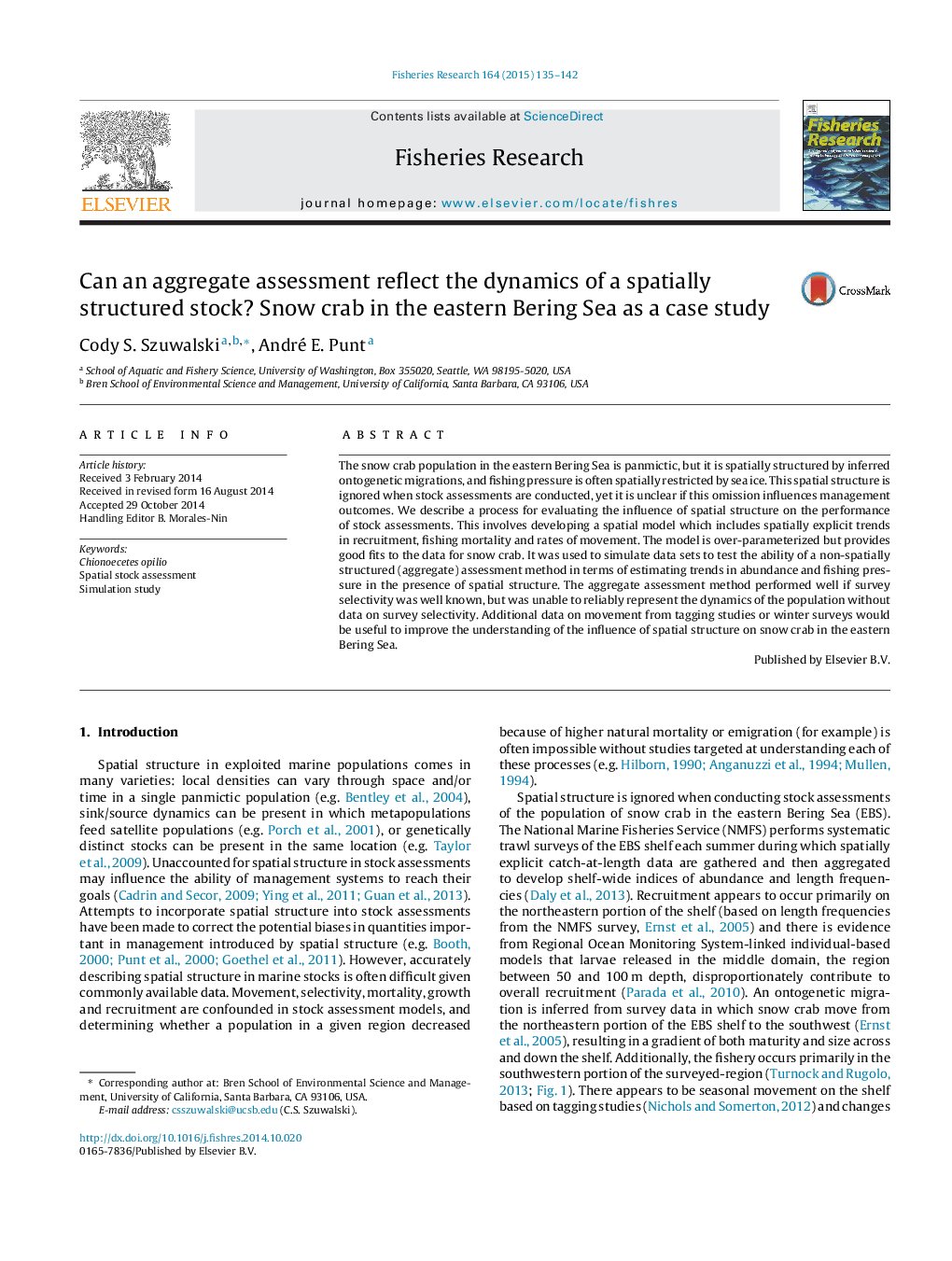| Article ID | Journal | Published Year | Pages | File Type |
|---|---|---|---|---|
| 6385680 | Fisheries Research | 2015 | 8 Pages |
Abstract
The snow crab population in the eastern Bering Sea is panmictic, but it is spatially structured by inferred ontogenetic migrations, and fishing pressure is often spatially restricted by sea ice. This spatial structure is ignored when stock assessments are conducted, yet it is unclear if this omission influences management outcomes. We describe a process for evaluating the influence of spatial structure on the performance of stock assessments. This involves developing a spatial model which includes spatially explicit trends in recruitment, fishing mortality and rates of movement. The model is over-parameterized but provides good fits to the data for snow crab. It was used to simulate data sets to test the ability of a non-spatially structured (aggregate) assessment method in terms of estimating trends in abundance and fishing pressure in the presence of spatial structure. The aggregate assessment method performed well if survey selectivity was well known, but was unable to reliably represent the dynamics of the population without data on survey selectivity. Additional data on movement from tagging studies or winter surveys would be useful to improve the understanding of the influence of spatial structure on snow crab in the eastern Bering Sea.
Keywords
Related Topics
Life Sciences
Agricultural and Biological Sciences
Aquatic Science
Authors
Cody S. Szuwalski, André E. Punt,
